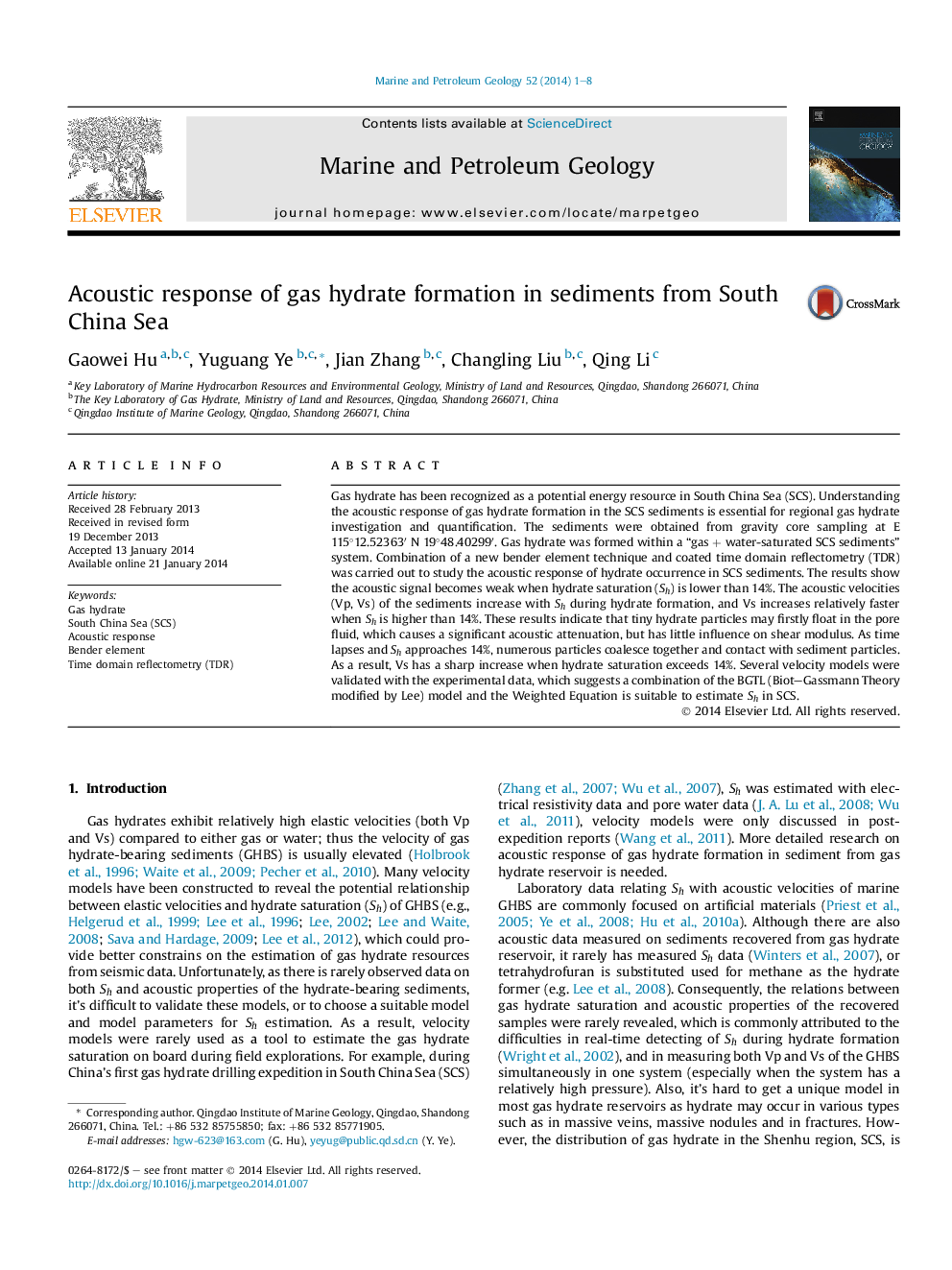| Article ID | Journal | Published Year | Pages | File Type |
|---|---|---|---|---|
| 6435465 | Marine and Petroleum Geology | 2014 | 8 Pages |
â¢New bender element technique is successfully applied in SCS sediments.â¢The changes of velocities with hydrate saturation are obtained experimentally.â¢Experimental results are consistent with log data in the field.â¢Hydrate may firstly float in pore fluid and then contact with sediment particles.â¢BGTL&WE model is validated for estimating hydrate saturation in SCS.
Gas hydrate has been recognized as a potential energy resource in South China Sea (SCS). Understanding the acoustic response of gas hydrate formation in the SCS sediments is essential for regional gas hydrate investigation and quantification. The sediments were obtained from gravity core sampling at E 115°12.52363â² N 19°48.40299â². Gas hydrate was formed within a “gas + water-saturated SCS sediments” system. Combination of a new bender element technique and coated time domain reflectometry (TDR) was carried out to study the acoustic response of hydrate occurrence in SCS sediments. The results show the acoustic signal becomes weak when hydrate saturation (Sh) is lower than 14%. The acoustic velocities (Vp, Vs) of the sediments increase with Sh during hydrate formation, and Vs increases relatively faster when Sh is higher than 14%. These results indicate that tiny hydrate particles may firstly float in the pore fluid, which causes a significant acoustic attenuation, but has little influence on shear modulus. As time lapses and Sh approaches 14%, numerous particles coalesce together and contact with sediment particles. As a result, Vs has a sharp increase when hydrate saturation exceeds 14%. Several velocity models were validated with the experimental data, which suggests a combination of the BGTL (Biot-Gassmann Theory modified by Lee) model and the Weighted Equation is suitable to estimate Sh in SCS.
